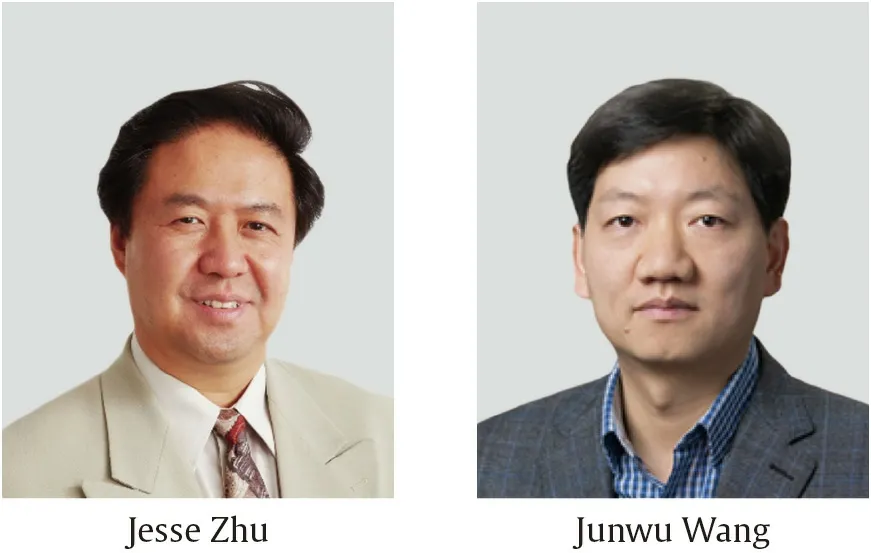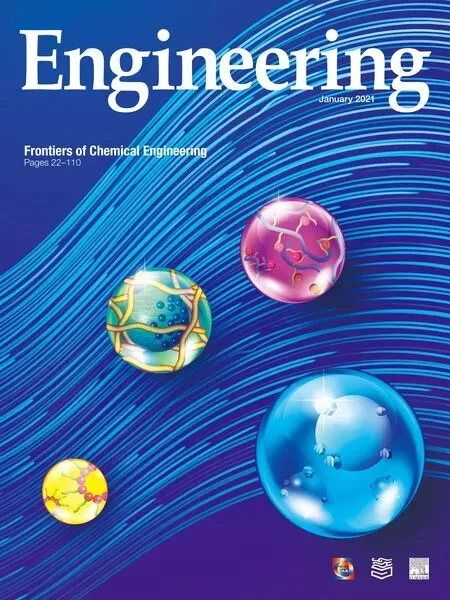Editorial for the Special Issue on Frontiers of Chemical Engineering
Jesse Zhu, Junwu Wng
a Particle Technology Research Centre, University of Western Ontario, London, ON N6A 5B9, Canada
b State Key Laboratory of Multiphase Complex Systems, Institute of Process Engineering, Chinese Academy of Sciences, Beijing 100190, China

The Eleventh Global Chinese Chemical Engineers Symposium(GCCES-11) was held on August 2-5, 2019, in Chengdu, China,organized by the School of Chemical Engineering of Sichuan University. The GCCES is a prestigious and world-wide academic exchange platform organized by the Global Academy of Chinese Chemical Engineers(GACCE),for chemical engineers and scientists interested in innovation and professional development to gather,exchange ideas, and make friends. It focuses on a wide range of topics relevant to cutting-edge research, new technologies, and areas of emerging growth in chemical engineering and science.The GCCES strongly promotes international academic exchanges and collaborations, facilitates cross-disciplinary integration and industrial-academic research co-operation, and encourages the professional development of young Chinese chemical engineers and scientists on the world stage.
This special issue on Frontiers of Chemical Engineering is a collection of special invited talks presented by a group of eight excellent young speakers at GCCES-11. The first two are the inaugural winners of the International Award for Outstanding Young Chemical Engineers (IAOYCE): Professor Hongbo Zeng from the University of Alberta, Canada, and Professor Yufei Song from Beijing University of Chemical Technology, China. The IAOYCE was launched jointly by the Chemical Industry and Engineering Society of China and the Global Academy of Chinese Chemical Engineers in 2019,to recognize outstanding contributions by younger chemical engineers below the age of 45. The other six speakers are the specially invited keynote speakers, designated as the (3rd annual)Future Chemical Engineering Scholars at GCCES-11. The Future Chemical Engineering Scholars series started in 2017, when the first six young scholars under the age of 40 were selected by the International Scientific Committee of the GCCES to present at GCCES-9 in Hangzhou, China.
This special issue includes five state-of-the-art reviews and three articles on the latest research in the field, all of which are excellent representatives of the frontiers of chemical engineering.These include reports on the chemical process intensification of separation and chemical reactions, the production of high-value chemical products via photocatalysis or metal catalysis, electrode design for proton-exchange membrane fuel cells, molten chloride salt technology for thermal energy storage,and the intermolecular and surface interactions in engineering processes, and are briefly introduced below.
In this special issue,Kai Wang et al.(this issue)review the process intensification of electrosynthesis using microreaction technology, focusing on flow patterns and mass transfer behavior as well as on prototypes for the scale-up of microreactors. Potential research issues for the development of novel electrosynthesis technologies are also proposed.
Xin Gao and Xueli Geng (this issue) propose a green and sustainable method for azeotrope separation based on the chemicallooping concept with the help of reversible-reaction-assisted distillation. The principle of the chemical-looping separation (CLS)method, the selection of reactants, and practices in the separation of various azeotropic mixtures are discussed in detail, leading to the conclusion that the CLS method is very effective for chemical separation process intensification.
Xiaobin Jiang et al.(this issue)provide a state-of-the-art review of membrane crystallization technology for accurate process control and intensification of solid particle production, with a focus on the introduction of basic principles, membrane materials, process control mechanisms, and optimizing strategies. Research efforts toward industrial applications,unexplored issues,and open questions that need to be addressed are also outlined.
Yufei Song et al. (this issue) report on the design of a PW12-P-UCNS (PW12stands for H3PW12O40·xH2O and P-UCNS stands for phosphoric acid-modified graphitic carbon nitride)photocatalyst and the development of an environmentally benign,synthetic process for benzaldehyde production through a photooxidation reaction in aqueous phase, under mild conditions. After a careful investigation of the transient photocurrent and electrochemical impedance, it is further revealed that superoxide radicals and photo-generated holes are the main active species.
Xuezhi Duan et al. (this issue) report on structural and kinetics insights into the support effects of the Pd-catalyzed semi-hydrogenation of acetylene. They find that the use of carbon nanotubes as the catalyst support offers enhanced kinetics to yield the ethylene product in comparison with the use of an α-Al2O3support, because a unique palladium (Pd) local environment with the presence of subsurface carbon can weaken acetylene/ethylene adsorption and thus boost the targeted reaction. Their study demonstrates the possibility of tailoring the local environment and electronic properties as an effective strategy for the design and manipulation of Pd-based catalysts for chemical reactions.
Shangfeng Du (this issue) reviews recent progress in his lab in the design and development of three-dimensional (3D) ordered electrodes from one-dimensional (1D) nanostructure arrays for high-performance proton-exchange membrane fuel cells, and reviews in detail the progress of 1D nanostructure arrays as a catalyst support and electrodes from 1D catalyst arrays.Challenges and future development opportunities regarding large electrochemical surface area and the quantification of oxygen mass transport resistance for 1D nanostructure array electrodes are also addressed.
Wenjin Ding and Thomas Bauer (the forthcoming Issue 3 in 2021) review recent progress in the research and development of next-generation concentrated solar power and thermal energy storage technologies, with an emphasis on molten chloride salt technology. Salt selection/optimization, molten salt property determination, and corrosion control of structural materials in molten chlorides are systematically reviewed.
Jiawen Zhang and Hongbo Zeng (this issue) first introduce typical intermolecular and surface interactions involved in various engineering processes and the nanomechanical techniques used to quantify the interaction forces between molecules and surfaces in complex fluids. Their recent progress on characterizing the intermolecular and surface interactions in several engineering systems is then reviewed. Finally, they discuss the importance of understanding these fundamental interaction mechanisms in resolving engineering challenges.
As guest editors,we would like to thank all the authors for their contributions,reviewers for their valuable suggestions for improving the quality of the articles, and the editorial staff of Engineering for their tireless support.We hope you enjoy reading the articles in this special issue.
- Engineering的其它文章
- Heteropolyacids-Immobilized Graphitic Carbon Nitride: Highly Efficient Photo-Oxidation of Benzyl Alcohol in the Aqueous Phase
- Membrane Crystallization for Process Intensification and Control:A Review
- Intermolecular and Surface Interactions in Engineering Processes
- Application of the Chemical-Looping Concept for Azoetrope Separation
- Comparative Study on Structural Redundancy of Cable-Stayed and Extradosed Bridges Through Safety Assessment of Their Stay Cables
- Polyvinylamine-Based Facilitated Transport Membranes for Post-Combustion CO2 Capture: Challenges and Perspectives from Materials to Processes

